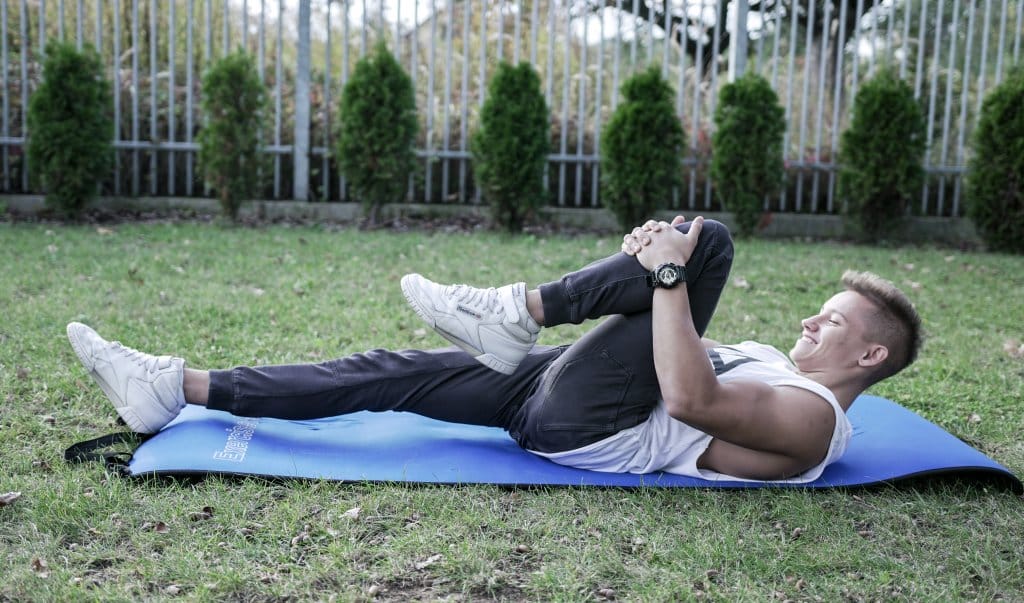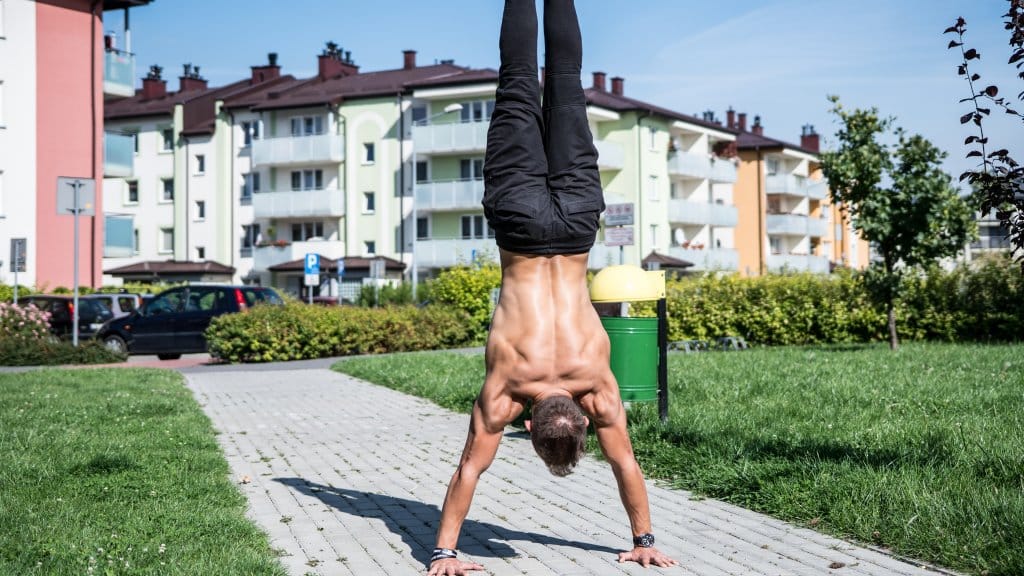
Recovery formula – it’s time to give it a rest!
When you think about the workout, I’m sure you see very different things at once
You see the level you’re at, the exercises you do every day, you think about the progress you’ve made and what are your goals, you asses what you’d like to change in yourself, what to work on harder – strength, endurance, flexibility? How to be better? Stronger? Faster? And that’s good. But you’re still missing
something. You have those two sets of activities – working out and not working out, and there’s no connection between them, am I right? And – don’t get me wrong – I don’t say you should exercise all the time
On the contrary, you should give your body some time to rest and heal and help the muscles in the healing process as much as you can. In other words, you should make some room in your daily
routine for the muscles recovery exercises. Of course, you can do it as you’ve always done – work out and then just… not work out for the rest of the day, but when you spend some time helping your muscles to recover faster, you’ll reach your goals easier! So it’s worth trying, isn’t it?
1. What is recovery formula and why should you apply it
So now, the big question is – how to recover faster from the workouts? There are some strategies you can implement to speed up the process, but first, you should realize how much you need them. The recovery formula is not just about your body – it’s about the mind as well, and that’s most important than you think. It may come as a surprise, but on a daily basis, we deal more often with a
mental than physical fatigue. Our bodies may deal with much more than our mind would let them. So, to overcome the fatigue, you have to give your mind time to recover as well. When you increase the time you spent on recovery, you should become more aware of your body and mind. And hey – it’s not some pseudo-psychological mumbo jumbo! It may prevent you from burning out, as you will have an occasion to check whether you’re not pushing yourself too hard.

2. How to speed up the healing process
It’s easier than you think, as you’ll see, and implementing some very simple strategies may make a difference. It’s not all about exercise recovery, but there are some helpful moves you can practice.
- Keep moving. Yes, first of all, you should move when you want your body to rest. That will make it recover faster and more effectively. Hell, yeah! The rest day doesn’t mean sitting anymore. Instead, you can have a walk, ride a bike, go swimming in a pool – in other words try out some new moves that will help your body relax.
- If you’re looking for something else to do, you can try the relaxing exercises. Of course, you should include stretching into your daily routine as well, but if you want some inspiration try out this neat recovery fitness!
- You can start with Knee to Chest or Double Knee to Chest exercise. On your back with both knees bent and feet flat on the floor, pull one knee up to your chest. You can clasp your hands behind your knee if your knee feels strained with your hands on top. Your lower back will naturally flatten to the floor. Hold for three to five breaths and switch legs. Then, in the same position, draw both knees up to your chest. Don’t pull in so tightly that it restricts your breathing.
- Next exercise is Supported Neck Flexion: Lying on your back, bring both knees up toward your chest with your ankles crossed. At the same time, bring your hands behind your head to bring your head toward your knees. Don’t strain in this position. Only go as far as is comfortable for you. Hold for 3-5 deep breaths.
- Another relaxing exercise goes like that: kneel down with your knees wide enough that you can bring your upper body between them comfortably. Place your forehead on the ground and clasp your hands behind your head. Your elbows will be around the level of your ears.
- What you can also do is sitting with your feet out in front of you, bend your knees so that you can comfortably rest your upper body on your legs. Cross your hands and place them on top of your ankles, and settle your head down on your shins.
- Then there’s the special squat – go to a deep squat position and put your head between your knees. When you do that, you should round out your back. If you’re not comfortable in a deep squat position, you can sit on a low stool – the important aspect is the spine position.
 You should also get enough food and sleep – these are very important issues when it comes to the recovery formula. And of course, pay attention to the quality of the food you’re eating. The main thing is to avoid empty calories. The sleep is an important issue as well – in a deep sleep phase, our muscles are healing and recovering so you should be sure that you get the quality sleep as well.
You should also get enough food and sleep – these are very important issues when it comes to the recovery formula. And of course, pay attention to the quality of the food you’re eating. The main thing is to avoid empty calories. The sleep is an important issue as well – in a deep sleep phase, our muscles are healing and recovering so you should be sure that you get the quality sleep as well.- And here are yet another aspects of how to improve recovery time: you should be realistic and consistent. It’s the consistent effort that brings you best results and this rule applies to
the recovery fitness as well! And you should prioritize. If you spent time only doing strengthening exercises, endurance training etc. you won’t go as far as with added recovery fitness! As far as the appropriate dose of realism is concerned, you shouldn’t push yourself beyond your current capacities. You have to look for the ideal amount of stress – too much, and you’ll burn out, too little, and you won’t progress fast enough.
- As it was already said, mental fatigue is standing more in your way to the recovery than body fatigue. That is why it’d be good if you’d give your mind some time to, well catch a breath. It doesn’t have to be meditating or yoga practice, but give yourself a moment of concentration on your breathing (even while doing normal daily activities), work on your mindfulness and so on. What may help with your mental fatigue is lowering your stress level. Do something just for fun – meet your friends, relax, do something else than training. That will help you to decrease the level of cortisol (the stress hormone) and give you some motivation to work on your next training.
3. Injury and fatigue – time to change your perspective
Unfortunately, sometimes the recovery formula comes in handy in more severe cases than just tired muscles after some strenuous workout. When some serious injury happens, the question asked is not: how to recover faster from workouts, but how to recover faster to start working out again. And the goal is set to come back to the time before the injury and move on as nothing happened. And in lots of cases this approach is manageable, but sometimes accidents are too serious and muscles’ overworking is so severe that there’s no real going back. Of course, you can apply the strategiesmentioned above, but they may not be enough. But what the recovery formula has to offer is the change of approach to injury and its effect. What is the most important thing here, is understanding, that most serious injuries come not from impact but faulty posture or improper exercises’ form! So, the time you have to give yourself to heal from your injury, should be spent not on thinking how fast can you go back, but what should you change, what can you improve in the way you’re working out. And when you’re starting to work out again after some injury and find out that you can’t do the exercises that you could before, don’t push it. Step back, change the approach, work on your position, give your body a painless place to rebuild itself.
It is good to assess your body abilities every day even when you’re not recovering from an actual injury. Sometimes you have to regress a bit because that’s what your body needs. Especially when you’re performing some high skilled exercises, like handstands. When you’re working on your skill acquisition, you’re overloading your nervous system. So, when you have some difficulty in performing an exercise you’ve already mastered, read it as a warning from your body, that it just needs more rest. And remember – you can feel all right, you can even feel rested, because your muscles are not so tired after all, and still you can be in need of recovery fitness.
 So, what you should do is to change your approach to injury and fatigue situation. You can treat it as a negative thing and try to move past it as fast as you can. Or you can treat it as a learning opportunity. About what you did wrong, where did you screw up, maybe you want too much too soon? Maybe you’re overworking your muscles? Or maybe you should first master the techniques, and instead of chasing yet another skill you should work on your form.
So, what you should do is to change your approach to injury and fatigue situation. You can treat it as a negative thing and try to move past it as fast as you can. Or you can treat it as a learning opportunity. About what you did wrong, where did you screw up, maybe you want too much too soon? Maybe you’re overworking your muscles? Or maybe you should first master the techniques, and instead of chasing yet another skill you should work on your form.
All in all, giving your body time to rest is more important than you think. If you want to do real progress, you have to do it right. And when you don’t give your nervous system time to recover, you’re not doing it right. Not at all. So, to sum up, you should add to your daily routine some form of assessment whether you really know your limits and the level you’re at, and apply the recovery
formula to your rest days.

